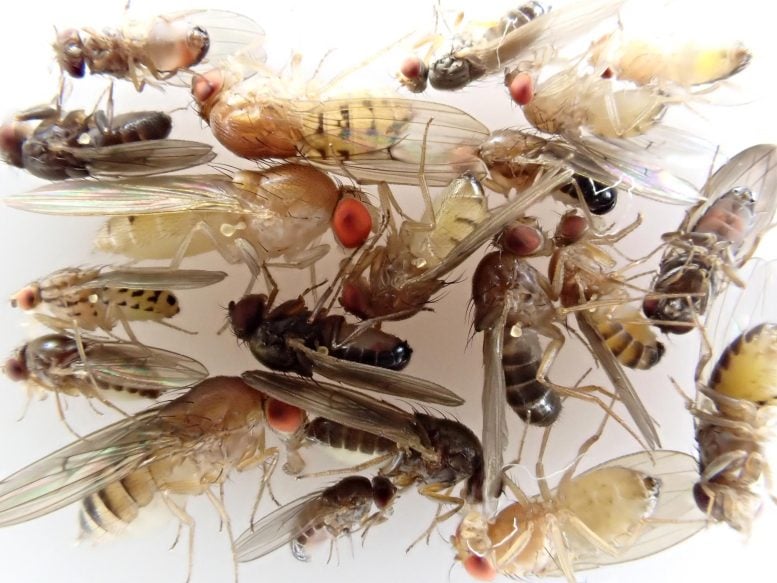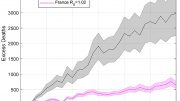
Researchers have made significant strides in genomic sequencing for the fruit fly family, Drosophilidae, by sequencing 179 species, including wild, museum-preserved, and lab-reared flies. Using a hybrid sequencing approach, they produced high-quality, low-cost genomes.
Researchers used a hybrid approach to sequence DNA from individual wild flies and museum specimens.
New research has significantly advanced fruit fly genomics by sequencing 179 species and improving the phylogenetic tree for 360 species, showing that comprehensive genome sequencing is achievable on a small budget.
Expanding Genomic Horizons in Fruit Fly Research
A multitude of new genomic sequence data fills major gaps in the fruit fly tree of life, Bernard Kim from Stanford University and colleagues report today (July 18) in the open-access journal PLOS Biology.
Fruit flies are classic model organisms in biological research and were among the first species to have their whole genome sequenced. With over 4,400 species, the diversity of the fruit fly family could offer insights into evolutionary patterns and processes. However, only a fraction of these species have their genome sequenced, and most published fruit fly genome sequences are from a very limited set of species with representative inbred laboratory strains.

A mix of 15 different fly species collected in the United Kingdom in 2023. Credit: Darren J. Obbard (CC-BY 4.0)
Advancements in Fruit Fly Genome Sequencing
To address this, researchers sequenced the genomes of 179 fly species in the Drosophilidae family, including wild-caught flies, preserved museum specimens, and laboratory-reared strains. Using a hybrid sequencing approach that combines the newest short- and long-read sequencing technologies, they were able to produce low-cost, high-quality genome sequences from limited material. They used the new genome sequences and previously published data to produce a phylogenetic tree for 360 species in the Drosophilidae family, refining our understanding of the evolutionary relationships of these species. They also aligned nearly 300 fruit fly genomes as an open-source tool for future comparative genomics research, such as a whole-genome alignment.

Co-author James Hemker conducts sweep net sampling in Redwoods State and National Park, California, USA. Credit: Bernard Y. Kim (CC-BY 4.0)
While large-scale sequencing efforts for larger organisms such as mammals are well underway, this study demonstrates that genome sequencing for small organisms such as individual flies — even those preserved in museums for up to two decades — is now possible.
The authors add, “It is now entirely feasible to think about assembling genomes for hundreds or thousands of species, even on the research budget of a single lab. This kind of large-scale, clade-level sampling will provide us with an unprecedented level of resolution for studying the genome sequences of diverse groups like fruit flies and beyond, which is sure to improve our understanding of the evolutionary process.”
Reference: 18 July 2024, PLOS Biology.
DOI: 10.1371/journal.pbio.3002697









Be the first to comment on "Unlocking Evolution: Breakthroughs in Fruit Fly Genomic Sequencing"